I skipped Mexico's party cities for this under-the-radar beach town that feels like a secret. I think it should be on every travel list in 2023.
Lisa Marion Smith

- While looking for a weekend getaway on Mexico's Pacific coast, my first thought was Puerto Vallarta.
- But I realized it wasn't the intimate vibe I wanted. Friends suggested a small surf town: San Pancho
Craving a beach getaway, I wanted to plan a trip to Mexico that would be relatively cheap and easy to reach from my home in Los Angeles.
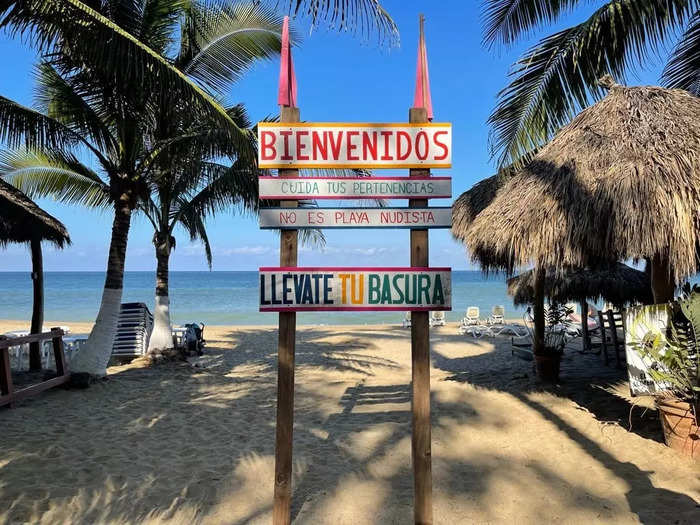
When I found myself recently dreaming of a Mexican beach getaway, I initially thought Puerto Vallarta seemed like a good choice.
It was a straight-shot flight from my home in Los Angeles and — from what I learned watching "The Love Boat" during my formative years — it was perfect for American tourists.
But the more I researched Puerto Vallarta online, the more I realized I wanted something different. Sure, I'd be able to have my choice of palm tree-lined resorts loaded with amenities and strong Wi-Fi, but the more I looked at Puerto Vallarta's big hotels online, the more I found myself longing for something a bit more unexpected. I realized I wanted a vacation that consisted of more than a mango margarita with a matching sunset view.
As much as I wanted the ease of a direct flight followed by little to no drive time, I started looking beyond Puerto Vallarta.
Mexican friends pointed me to San Pancho. A little over an hour north from Puerto Vallarta, they told me I'd love its unspoiled natural beauty, commitment to ecotourism, and beach that is a haven for surfers.
I took their advice and it was the best recent travel decision I've made. Here's why I'm letting the secret out on this hidden gem that I think should be on everyone's radar.
San Pancho is just 33 miles from Puerto Vallarta, but I thought it felt a world away.
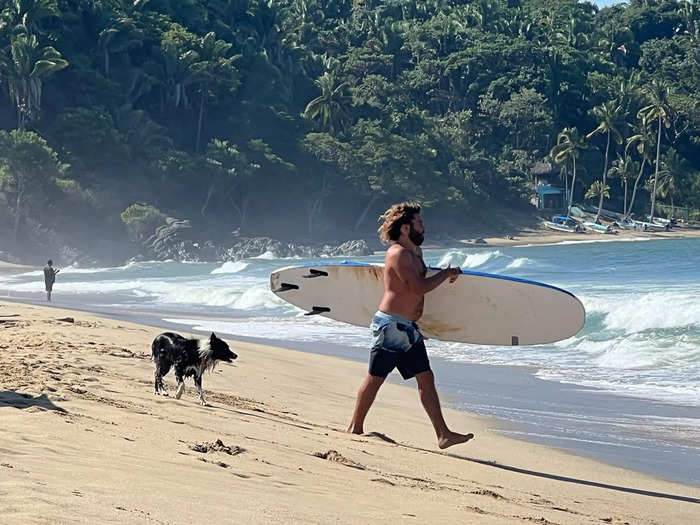
One of the main reasons I ended up booking San Pancho over Puerto Vallarta is its more diminutive size.
Located 33 miles north of Puerto Vallarta, which has a population of 300,000, San Pancho is a much smaller community with a year-round population of just 3,000.
As the high tourism season starts in November, that number grows to 4,000 with the influx of North Americans who come for the warm, dry winters.
I was one of them, and traveled to San Pancho in November of 2022 with my boyfriend on a direct, three-hour flight from Los Angeles International Airport to Licenciado Gustavo Díaz Ordaz International Airport in Puerto Vallarta.
I thought the packed plane had party vibes, and I spotted several bachelorette groups and large families. Sensing this atmosphere, I was once again pleased with my decision to go to San Pancho.
When we landed, we exited to find a somewhat frenzied taxi and ride-share scene. I was glad I booked us a private car through our hotel.
For $160 US dollars roundtrip, we climbed into a waiting SUV to go to the hotel. As the car drove north through Puerto Vallarta on the way to San Pancho, we passed the exact chain outposts I was hoping to avoid on vacation: Starbucks, Walmart, Sam's Club, Marriott.
We then left the highway for a two-lane road with no streetlights and thick jungle on either side. As we approached San Pancho, I was immediately struck by how the small, intimate enclave contrasted so deeply from it's much larger neighbor to the south, Puerto Vallarta.
I stayed in Agua de Luna Boutique Hotel in San Pancho. I thought it was an architectural jewel that exemplified the town's ethos of sustainability and character of quiet coastal cool.
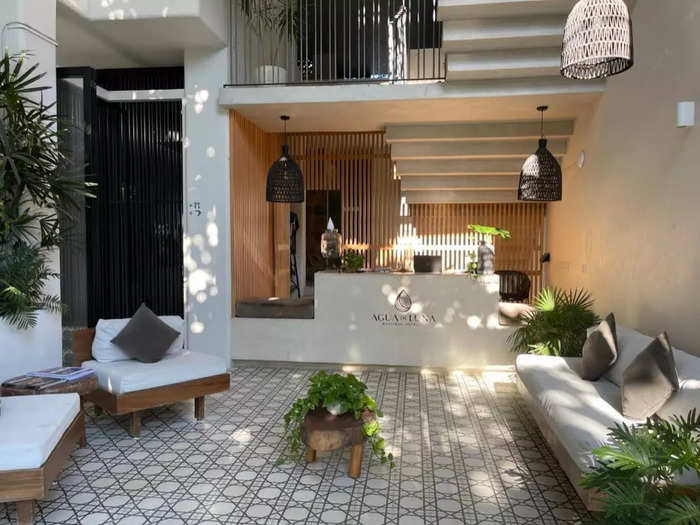
When looking for a place to stay, I wanted an upscale hotel that was within walking distance to the ocean, but wouldn't cost a fortune.
Online, I came across Agua de Luna Boutique Hotel, a 15-room hotel just a few blocks off the main street in San Pancho. Owned by the architect who designed it, each room has earth-toned linens, art, and furniture inspired by the natural surroundings. Native plants and palm trees were preserved during construction. It was exactly the opposite of the big-brand resorts I eschewed, and I booked it about a month in advance.
When I arrived, I found a minimalist property with high ceilings that made for calming and airy spaces. White tiles and poured-cement floors directed the flow of light up and down stairwells and from room to room.
Including tax, my room was about $340 per night. Based on my research, comparable hotels in Puerto Vallarta would have cost me more like $600 per night. The Wi-Fi was good for my phone, but I didn't try video chats like FaceTime and didn't stream any movies.
While there are more expensive resorts in San Pancho, given the design, service, and location, I felt like I got a bargain.
Every morning, I started my day with cappuccinos to-go to bring back to my private balcony.
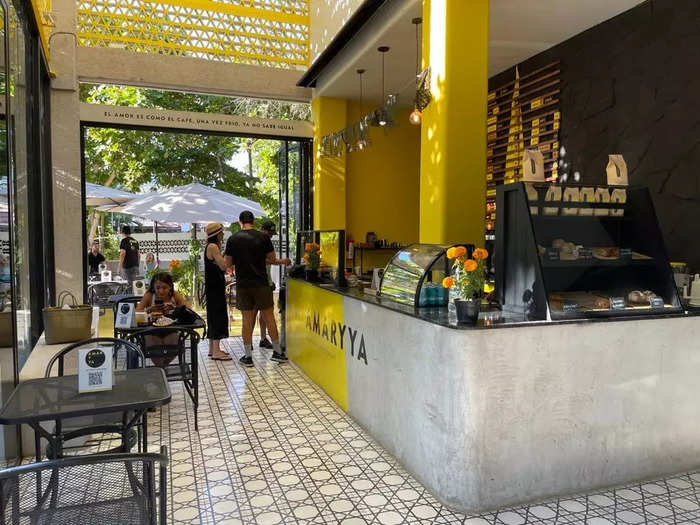
Everything about staying in San Pancho felt laid-back, starting with my morning coffee.
I grabbed one to-go each day from the hotel's open-air coffee shop, Amaryya Cafeteria, and took it back to my room's private balcony where I had an aerial view over the hotel's grounds.
I thought that the hotel was ideal for a water lover like me. It was a short walk to the beach and had multiple spaces for swimming.
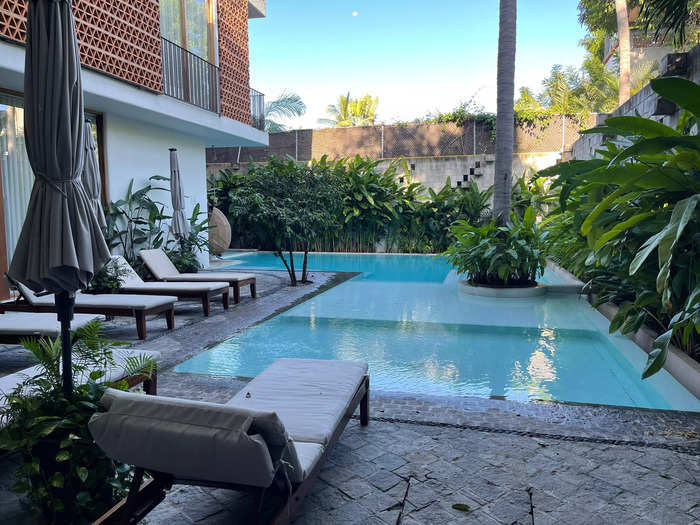
Agua de Luna in Spanish means moon water, and I thought the hotel was aptly named.
As I explored, I found that the hotel's design celebrates all nature, but especially water.
The saltwater pool tucked away in a shaded back section of the ground floor felt like a hushed oasis. It was the type of place where I could read a book or take a long nap on a lounge chair.
The beach meanwhile, was just a short walk away, giving me the best of both worlds and the tough daily decision of beach or pool.
While I enjoyed the pool and beach, the two rooftop hot tubs were my favorite spots to enjoy an evening glass of wine.
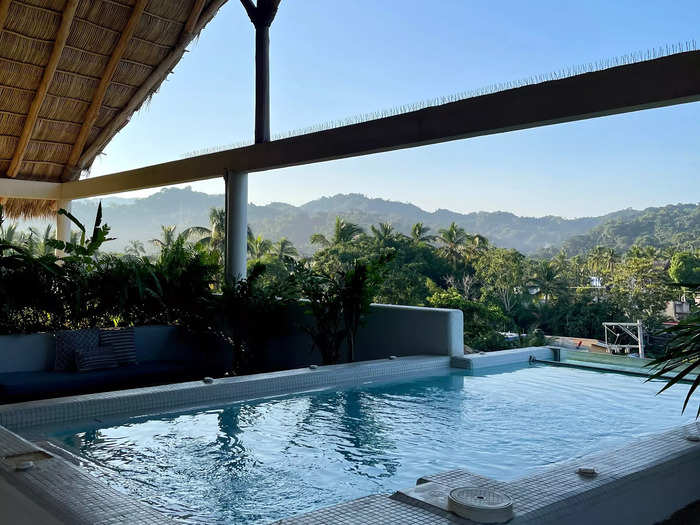
After a day on the beach, I found myself creating a daily ritual of walking three stories up to the two hot tubs on the top floor of Agua de Luna.
Shielded by a palapa roof made of dried palm leaves, I immersed myself in the hotter of the two tubs, sipped on complimentary wine that came with our room, and admired the view. Generously sized, each tub could accommodate several people, I thought, but most of the time, I had one to myself.
Also on the rooftop was a dedicated yoga area and a sturdy canopy outfitted with solar panels and large containers to catch rainwater.
Sitting up here felt comfortable. Perhaps this is why high season begins in November and runs through April. I was told by our driver to the hotel that in the rainy season — July through September or October — the town becomes a sauna of heat and humidity.
Beyond the hotel, I was equally impressed by my first impression of San Pancho. I thought it was a laid back, family-friendly beach town with good restaurants and shopping.
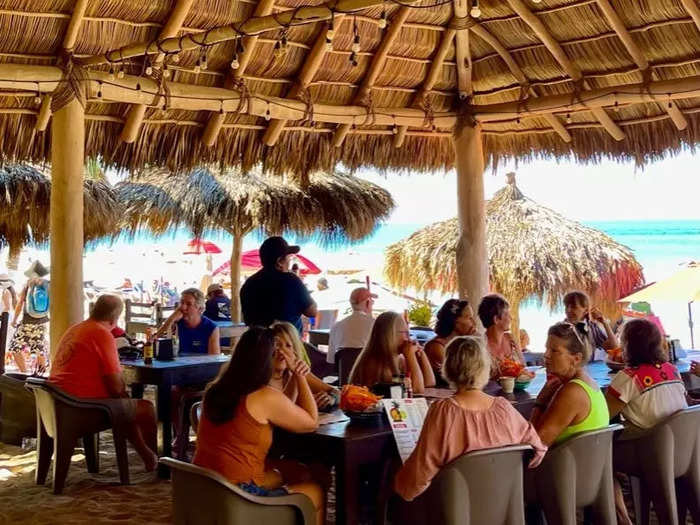
Walking around San Pancho, I saw multi-generational families cruising town in ATVs and golf carts with parents driving, toddlers sitting on grandparents' laps, and older children and teenagers riding in the back. I also saw young people on bikes and motor scooters.
I didn't see any big North American chain restaurants in San Pancho. I found the bars and restaurants to be on the mid- to smaller side, with fresh fish prominently featured. I thought the service was excellent everywhere I went.
At the restaurant San Pancho Marino I went to on the first night, I ate mahi-mahi that was caught that same morning by the owner. A charming Frenchman, he visited my table to pour the French rosé himself.
I was happy to see a lot of Mexican tourists enjoying the same restaurants and piece of sand as their North American counterparts. I always have felt that if the tourists from the host country like a place, it must be good, since they could spend their money in any number of nice places in Mexico and, yet, chose San Pancho.
It once again validated my choice of choosing San Pancho over Puerto Vallarta.
While I'm sure Puerto Vallarta offers plenty of shopping, I suspect I got more for my money in San Pancho.
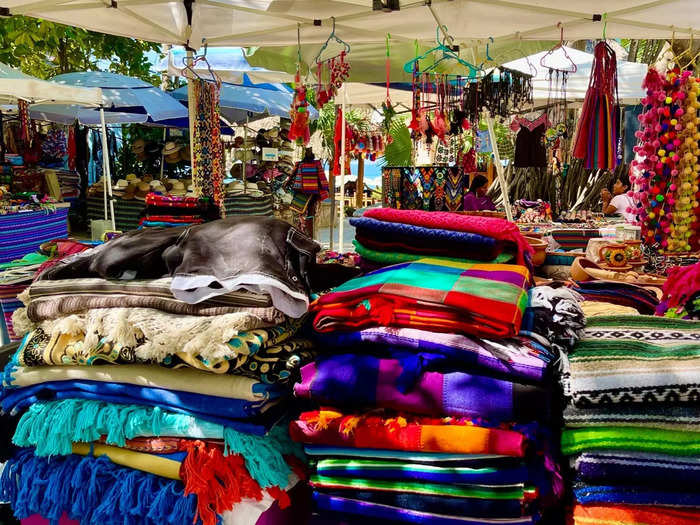
I always like to peruse local stores when I travel and I appreciated that the closest thing to a retail chain I saw in San Pancho was the Sayulita Shirt Co, which is a Mexican men's store with outposts in the neighboring town of Sayulita, and in Puerto Vallarta.
It was there that my boyfriend bought a button-down shirt with a prints of lucha libre wrestling masks. In keeping with San Pancho's eco-conscious theme, the shirts made by Sayulita Shirt Co are 100% cotton with buttons constructed from biodegradeable, nontoxic corozo nuts, we learned in the store.
Then it was my turn to shop. At a boutique store with home goods and women's wear, I bought a handwoven dress that I was told was made in the Mexican city of Guadalajara.I also visited a store that sold only ceramics, and came home with two small locally-made dishes crafted from alabaster and two ceramic shot glasses.
The store Mexicolate makes chocolate bars, drinks, and snacks from locally-grown organic cacao, and I bought some to nibble on during the plane ride home, as well.
Everything we bought was inexpensive and I was happy to support the local economy and its artisans.
I learned that surfing is a big draw in San Pancho and saw many shops in town and huts on the beach offering rentals and lessons.
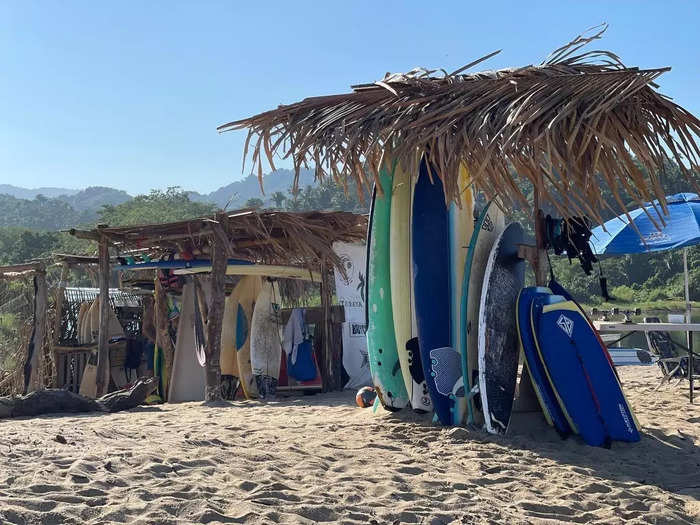
From the moment I stepped onto the main street in San Pancho, I understood why it's regarded as a surf town.
Everywhere I looked, I saw people carrying surfboards, surfboards sticking out from the back of cars, and more surfboards hooked onto the sides of bikes. As I shopped, I saw signs advertising surf lessons, rentals, and gear for purchase.
I followed the surfboards down the main drag, past the bars and restaurants, and towards the beach.
I'm not a surfer, but standing on the sand, I could see that the waves were big and strong, and I enjoyed watching the locals excel at their favored hobby.
I did venture in for a swim, but my dip in the Pacific didn't last long. I got rolled by the swells, and there were no lifeguards, and the current was strong. So, I preferred to spend most of my time on the sand. I was surprised to find it somehow free of crowds, trash-free, and well maintained.
I saw surfers and beachcombers share the sand with the local dogs, who were always up for a game of fetch.
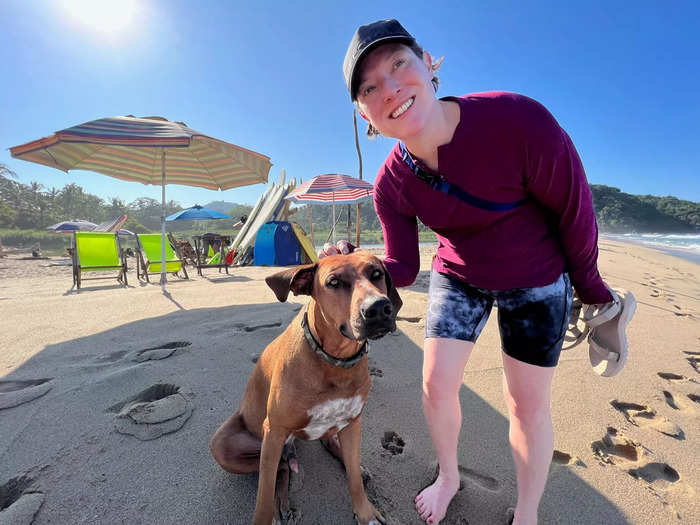
Mornings became my favorite time be on the beach in San Pancho.
At 7 a.m., it still appeared mostly deserted. By 8 a.m., I noticed a few others walking, running, meditating, or doing yoga.
By 9 or 10 a.m., I saw the palapa-roofed surf shacks start to open their doors and the beachside restaurants come to life. Soon after, the local open-air market was up and running and tourists came strolling through from neighboring towns for brunch.
But on my morning walks on the beach, my favorite locals quickly became the dogs.
They're not strays, as I noticed they all had collars or bandanas around their necks. But it was never clear to me who they belonged to. I watched as they happily swam in the ocean, played with each other on the sand, and sometimes aggressively lobbied passersby for a game of fetch.
When I tired of throwing the stick for one dog, he insisted until I gave him a firm "no." Then he gave up and carried it over to the next person strolling along the shore.
This was their beach, I thought, the rest of us are just visiting.
Because of the dogs, I was reminded that the official name of the town is San Francisco, or Saint Francis. In Mexico "Pancho" is the nickname of Francisco. Though I suspect the canine citizens of San Pancho are unaware, St. Francis is the patron saint of ecology — and animals.
Everywhere I went, local fish was on the menu with oysters, shrimp, and mahi-mahi all available right on the beach.
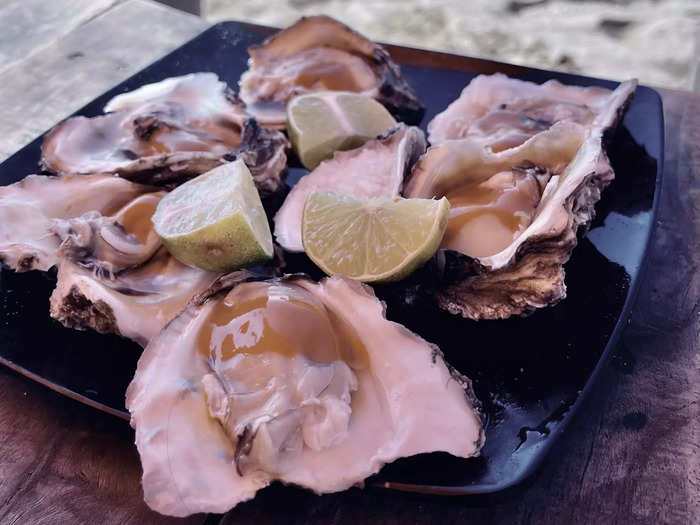
I quickly came to love the local food in San Pancho in addition to its charming hotels, laid-back atmosphere, and friendly canine locals.
Sitting under an umbrella on the beach one afternoon, I bought oysters from the son-in-law of the man who harvested them from the oceanfront rocks about a quarter of a mile away. They were meaty, large, and accompanied by Mexican hot sauce and fresh lime.
Restaurants I went to on the beach served ceviche made from locally-caught shrimp and mahi-mahi with small packets of crackers or tortilla chips. I was surprised to not see a big basket of tortilla chips like I would at a restaurant in the states. But after an hour by the ocean I could see why: the humidity made the chips go stale fast.
When dining on the beach, many local vendors often came to our table to sell their wares. I found a simple "no, gracias" was usually enough to send them on their way.
Most of these services in San Pancho were cash only. Although paying with US dollars in San Pancho was possible, I found the exchange rate to be less favorable and aimed to keep cash on hand so I could enjoy every good looking restaurant or stand we passed by.
The most raucous nightlife I found in San Pancho were the roosters who crow through the night.
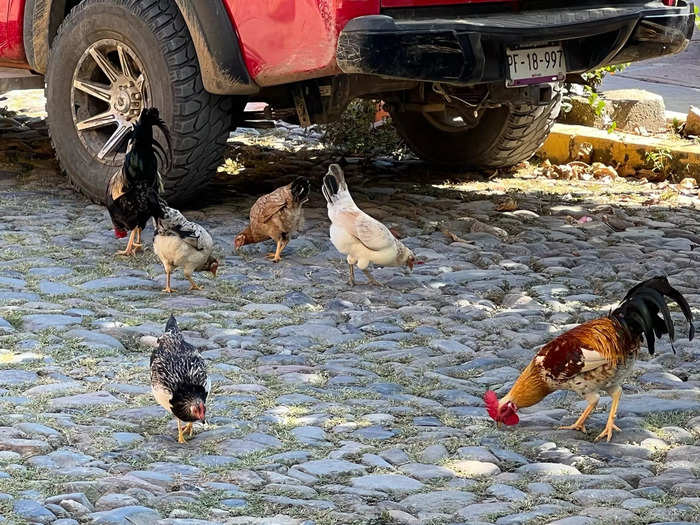
Compared to my impression of Puerto Vallarta, San Pancho did not appear to be a party town at all.
From the roof of Agua de Luna Boutique Hotel, I heard an outdoor band playing in the neighborhood, but it was never exceptionally loud, and did not take place very late.
However, this is not to say that there is no nighttime activity.
On my first night in San Pancho, I was too tired from travel to hear anything. But by the second night, I was awoken several times by roosters crowing: first one, then another from a different direction, then a third chiming into the poultry chorus.
In the daylight, I could see my nighttime serenaders on the sidewalks and cobblestone streets, preening, red-combed roosters surrounded by a flock pecking hens.
I came to learn they're a fixture in town, and saw them immortalized on stickers and t-shirts for sale in stores.
I'm a light sleeper and was glad I brought my earplugs.
I was so impressed by my visit, I'm already planning another trip back to San Pancho.
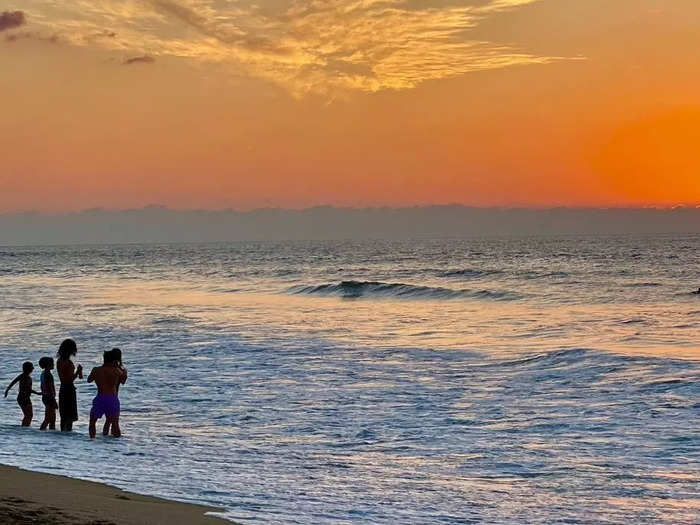
The only downside of my time in San Pancho was it went by too fast.
Soon, we were packing up to head home, but I was so glad I had veered off the common tourist path to discover this well-kept secret gem, though I suspect it won't stay that way for long.
I'll certainly be back soon, and on my list for next time will be to try the small restaurants I spotted set up on the sidewalk on the side streets off the main drag that appeared crowded from lunchtime until closing, serving delicious looking tacos and big steaming bowls of hearty stew.
I can't wait to try it, and to return so I can once again relax on the beach, shop local, and maybe catch a wave.
Popular Right Now
Popular Keywords
Advertisement